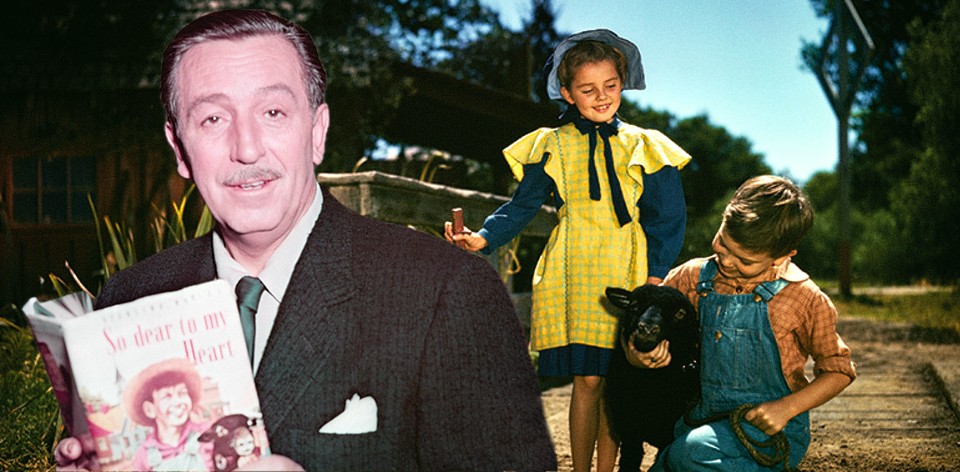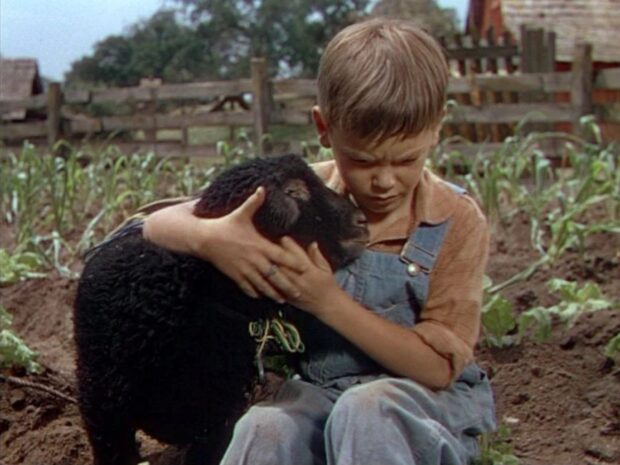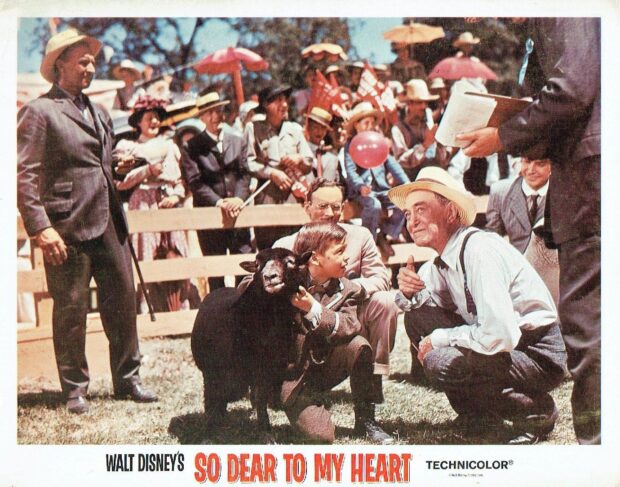Walt Disney catches a wave of nostalgia, blending live action and animation with his love of small town America — literally laying the tracks for Disneyland in the process.
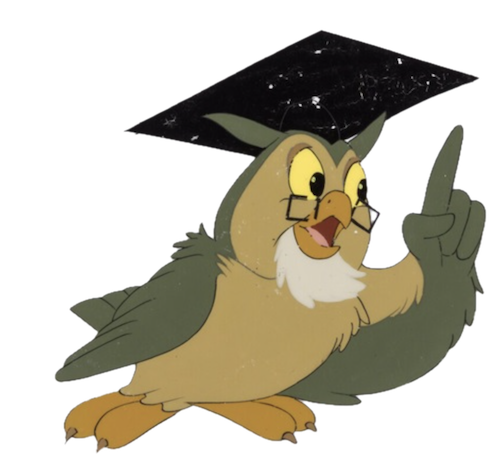
Best known for being ‘the one with the black sheep,’ SO DEAR TO MY HEART (1948) follows the animated/live action hybrid model of Song of the South (1946) – along with Walt Disney’s regular child cast members Bobby Driscoll and Luana Patten – but thankfully without the racist overtones.
The film’s nostalgia for small town America is borne of a post-war desire for gentle throwbacks. It’s also a movie that indicated what was dear to Walt’s past and future heart, drawing on his own childhood while planting the seeds for his obsessions over the next decade.
So dear to Walt’s heart
Based on the 1943 Sterling North book Midnight and Jeremiah, but set in Indiana in 1903, this isn’t far from the Marceline, Missouri that Walt and his brother Roy grew up in at the start of the century. If you visit a Disney theme park today, you can see the strength of these fond memories in Main Street, USA.
The film itself is about the young Jeremiah (Bobby Driscoll) who dreams of owning a champion horse, but his fate and interests are turned by the birth of a black lamb. Despite the lack of demand for black wool, and his granny’s protestations, Jeremiah becomes determined to foster the lamb to its own state fair victory.
Walt and screenwriter Edwin Justus Mayer started work on SO DEAR TO MY HEART as early as 1945, with location scouting in Indiana happening around this time. After meticulously recreating what they saw a little closer to home in California’s San Joaquin Valley, production began the spring of 1946 and would continue for well over two years. Crew and cast worked in temperatures in excess of 100°F (or 37°C) — often in full period costume. Walt left the filming in the hands of director Harold Schuster following his work on My Friend Flicka (1943), but would later take a more active role in post-production.
For the most part, the end product is a straight live action film punctuated by some animated interstitials. It’s handsomely shot on those lovingly detailed sets by cinematographer Winston C. Hoch, who had previously worked as a DP on the Technicolor sequences of The Reluctant Dragon and later won back-to-back Oscars for Victor Fleming’s Joan of Arc (1948) and John Ford’s She Wore a Yellow Ribbon (1949). So, we’re talking about peak Hoch here. You only need to look at some of those sunrise scenes later in the film as evidence. (Hoch also shot Darby O’Gill and the Little People for Disney as well).
Owls and Scottish spiders
If you ever get a chance to look at the Lost and Found featurette on the UK DVD from about a decade ago, you’ll discover that Disney was as meticulous about set design as he was on animation. Artist and designer Mary Blair’s exacting concept art was crafted into Grundy’s store, for example. There’s a whole-ass merry-go-round built just for background detail! We’re starting to understand why this film was in production for two-and-a-half years. (Fun fact: the train depot seen in the film wound up in animator Ward Kimball’s house and was later purchased by Pixar co-founder John Lasseter).
Still, when you think about Disney of this era, you may still think of animation. Unlike the animated sequences in Song of the South, which were complete and almost self-contained cartoons, here it’s a semi-didactic scrapbook that serves as a series of linking segments. If anything, these sequences now seem tacked on, but remain engaging pieces. Hosted by the animated Wise Old Owl — a design that seems to have set cartoon owl design in place for over 80 years — we get songs like ‘It’s Whatcha Do With Whatcha Got’ and ‘Stick-to-it-ivity.’ The latter has some of the more innovative animation in it: Christopher Columbus fights a fire-breathing sea creature while Robert the Bruce watches the struggles of an animated Scottish spider. Is it a bit weird? Yes, delightfully so.
It’s moments like this that balance out the more saccharine nostalgia of the back half, especially granny’s often contradictory lessons in theology. At one point, she convinces Jeremiah that their god is punishing him for his vanity – a harsh morality lesson for a small boy! Strangely enough, the animated sequences weren’t in the original plan for SO DEAR TO MY HEART. It was distributor RKO who felt that a film released under the ‘Disney’ banner created certain audience expectations — and so a compromise of sorts was reached and the animated segments were figments of Jeremiah’s imagination.
In his biography of Disney, Neal Gabler concludes that SO DEAR TO MY HEART was “on its face a kitschy, syrupy, unimaginative” film, adding it was “essentially a greeting card.” Yet the reviews at the time were favourable, with the New York Herald Tribune hailing it as having “a gracious and engaging formula for blending real drama with the pictorial imagination of an animated cartoon.”
All aboard
If SO DEAR TO MY HEART feels like a footnote in modern Disney history, perhaps it was all about timing. Leonard Maltin (in The Disney Films) argues that its simple story was a hard sell, and it arrived at the tail end of a nostalgic wave filled with films like Meet Me in St. Louis (1944) and State Fair (1945). One wonders if its small town message would fit in seamlessly today with the Hallmark oeuvre, or the low-stakes drama of the Disney Channel and now Disney+ originals.
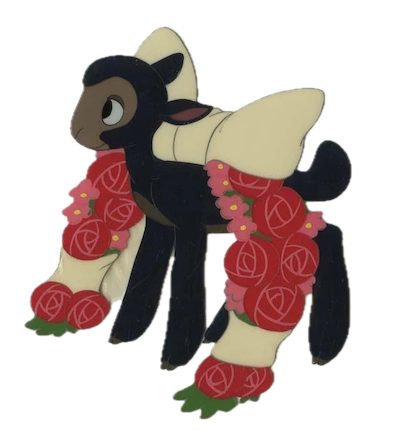
These days, the film’s minor status is also partly due to its lack of availability on physical media for the last decade or so. Nor is it on their flagship streaming platform, despite not seeming to need any of the content advisories Disney has recently created. (At the time of writing, it is available in restored HD on iTunes/Apple TV).
Yet the legacy of this film is evident in Disney’s filmography. Only two years later, the studio would have a bigger success with the wholly live action Treasure Island (1950). The elaborate sets for SO DEAR TO MY HEART reportedly began Disney’s obsession with miniatures, which in turn led to him building his own backyard train set. As Disney fans know, these were the seeds that grew into a little park called Disneyland. That is another story for another day.
References
Gabler, N. (2007). Walt Disney: The Triumph of the American Imagination. Vintage.
Kothenschulte, D. (2021). The Walt Disney Film Archives: The Animated Movies 1921-1968. Taschen.
“Lost and Found” (2003). In So Dear to My Heart [DVD]. Walt Disney Studios Home Entertainment.
Maltin, L. (1973) The Disney Films. Crown.
MORE FROM DISNEY MINUS: Newman Laugh-O-Grams | Walt’s first fairy tales | Alice Comedies | Oswald the (Un)lucky Rabbit | Silly Symphonies | The Spirit of 1943 | So Dear to My Heart | One Hour in Wonderland | The early lost films | Johnny Tremain | Westerns of the 1950s | Moon Pilot
All images in this article are owned by Disney unless stated otherwise.

